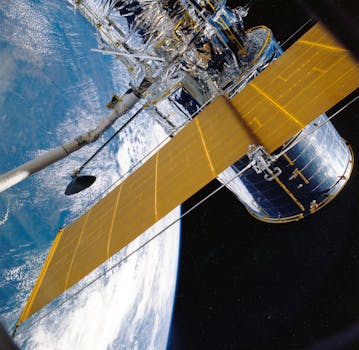GEO Satellites: Understanding the Technology and Its Applications
GEO satellites, or Geostationary Earth Orbit satellites, are a type of satellite that orbits the Earth at an altitude of approximately 36,000 kilometers. They are stationed above the equator and remain fixed in relation to a specific point on the Earth’s surface, providing continuous coverage of a particular region. GEO satellites are a crucial part of modern telecommunications, enabling a wide range of applications such as television broadcasting, telecommunications, and weather forecasting.
At the beginning of the GEO satellites era, the technology was primarily used for television broadcasting, but over time, it has evolved to support various other applications. Today, GEO satellites play a vital role in global communications, providing internet connectivity, mobile networks, and other telecommunications services. They are also used for navigation, weather forecasting, and Earth observation, among other things.
The Technology Behind GEO Satellites
GEO satellites are equipped with transponders, which are devices that receive and retransmit signals. These signals are transmitted from the Earth’s surface to the satellite, which then amplifies and retransmits them back to the Earth. The signals are received by large antennas, known as earth stations, which are located on the ground. The earth stations are connected to the telecommunications network, allowing the signals to be distributed to various users.
GEO satellites are powered by solar panels, which provide the necessary energy to operate the satellite’s systems. They are also equipped with propulsion systems, which allow them to maintain their position in orbit and make any necessary adjustments. The propulsion systems use a combination of fuel and electric propulsion to achieve the desired orbit and maintain the satellite’s position.
Applications of GEO Satellites
GEO satellites have a wide range of applications, including television broadcasting, telecommunications, navigation, weather forecasting, and Earth observation. They are used to provide global coverage, enabling signals to be transmitted to any point on the Earth’s surface. This makes them an essential part of modern telecommunications, as they enable the transmission of data, voice, and video signals over long distances.
In addition to their use in telecommunications, GEO satellites are also used for navigation purposes. They provide location information and timing signals, which are used by GPS receivers to determine their position and velocity. This information is essential for a wide range of applications, including aviation, maritime, and land transportation.
Benefits and Challenges of GEO Satellites
GEO satellites offer several benefits, including global coverage, high bandwidth, and reliability. They are also relatively low maintenance, as they do not require frequent adjustments or updates. However, they also present several challenges, including the high cost of launch and operation, limited capacity, and potential interference from other satellites.
Despite these challenges, GEO satellites remain a crucial part of modern telecommunications. They provide a reliable and efficient means of transmitting data, voice, and video signals over long distances, enabling global communication and connectivity. As technology continues to evolve, it is likely that GEO satellites will play an even more important role in the future of telecommunications.
